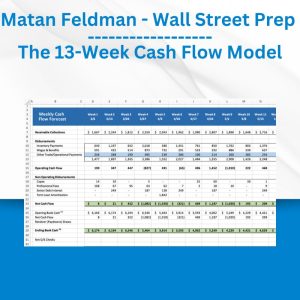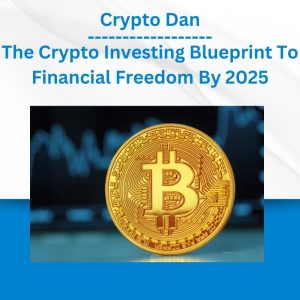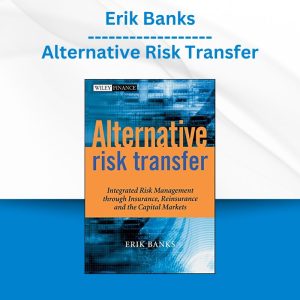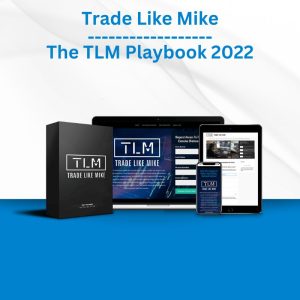*** Proof of Product ***
Exploring the Essential Features of “Kyle Peterdy – CFI Education – ESG for Commercial Lenders”
ESG for Commercial Lenders
How do commercial lenders make sense of the current wave of ESG, and how does it impact their analysis and underwriting?
- Understand why ESG risks should be considered for private-market, SME borrowers
- Learn how to integrate ESG factors into your financial analysis and projection modeling
- Appreciate how ESG risks can quickly become financial risks if not mitigated accordingly
Overview
ESG for Commercial Lenders Course Overview
This ESG for Commercial Lenders Course looks at how ESG factors may influence risk assessments and credit decisions for private, small and middle-market commercial lenders. Environmental, social, and governance factors can affect a company’s ability to service debt obligations but are often either overlooked or misinterpreted. Further, many financial institutions face a disconnect between actions at the individual borrower level and the lender’s own ESG profile, including how to manage messaging to stakeholders. This course ensures that credit professionals will be equipped to understand the impact that sustainability practices, or a lack thereof, can have on a company’s risk profile and, ultimately, on a firm’s disclosure practices.
ESG for Commercial Lenders looks at topics like how climate risks may affect business operations as well as its physical collateral, and how changes to a borrower’s reputation can impact its supply chain and its financial results. The course includes an interactive case study where we will have the opportunity to analyze a borrowing client and conduct downside sensitivity analysis in Excel using an ESG lens.
ESG for Commercial Lenders Learning Objectives
Upon completing this course, you will be able to:
- Explain why ESG risks should be a material consideration for commercial lenders
- Define how financed emissions influence a lender’s own ESG disclosures
- Calculate a borrower’s attribution factor using PCAF Standards
- Explain systems thinking and how it relates to ESG integration & credit risk
- Integrate ESG factors into a financial model and calculate adjusted financial ratios for an example borrower
- Identify trends and future strategies for incorporating ESG into credit risk analysis
Who Should Take This Course?
This ESG for Commercial Lenders Course is highly recommended for current and aspiring credit professionals, including relationship managers, credit analysts, and risk managers. Every company faces ESG challenges, so lenders must improve their understanding of and their implementation of ESG integration techniques in order to more holistically assess credit risk.
What you’ll learn
Introduction
Introduction
Learning Objectives
Download Course Files
The Big Picture of ESG
Defining ESG
Reframing the Problem
Commercial Lenders and ESG
Operational Boundaries and the Scopes of Emissions
The Partnership for Carbon Accounting Financials (PCAF)
The Attribution Factor
Issues in Calculating Emissions
Reverse-Engineered Estimated Emissions
Interactive Exercise 1
ESG & Systems Thinking
ESG and the Cost of Funding
Systems Thinking
ESG Integration
Corporate Reputation
Physical Climate Risks Title
Interactive Exercise 2
Case Study
Inputs Introduction
Model and Supporting Schedules Introduction
Credit Metrics and Lending Ratios Introduction
Calculating Credit Metrics
Supporting Schedules and Financial Statements
Income Statement Assumptions
Balance Sheet Assumptions
Working Capital Assumptions
Lending Assumptions
Live Case Scenario Toggle
Conditional Formatting
Scenario Analysis – Credit Metrics
Scenario Analysis – Financial Statements
Scenario Analysis – Assumptions Feedback
Case Study Summary
Download Completed Files
Interactive Exercise 3
ESG Trends in Commercial Lending
Potential Trends in ESG Integration and Analysis
Future ESG Trends – Risk Rating and Due Diligence
Interactive Exercise 4
Future ESG Trends – Client Reporting
Future ESG Trends – Pricing and Profitability Models
Loss Given Default
Capital Reserve Requirements
Profitability Exercise – Probability of Default
Profitability Exercise – Loss Given Default
Profitability Exercise – Capital Requirements
Profitability Exercise – Mitigation Strategies
Interactive Exercise 5
Conclusion
Conclusion
Qualified Assessments
Qualified Assessment
Please see the full list of alternative group-buy courses available here: https://lunacourse.com/shop/










 Dave Landry - Stock Selection Course
Dave Landry - Stock Selection Course